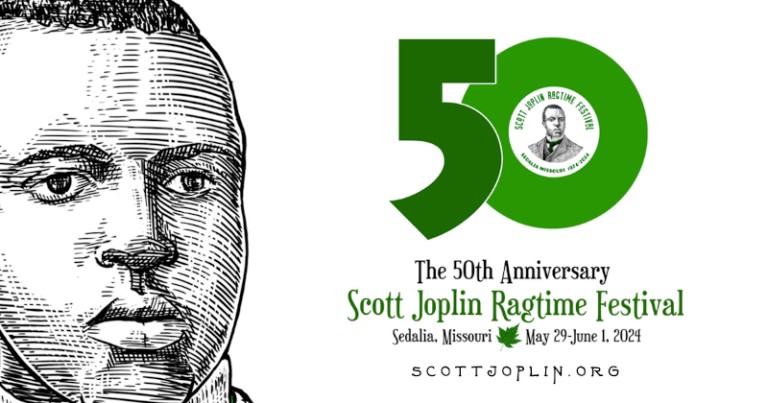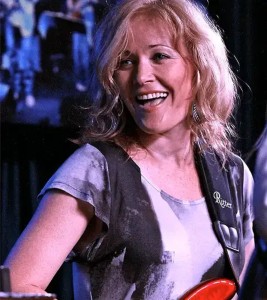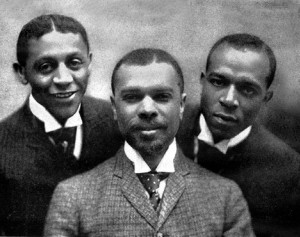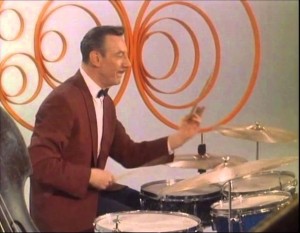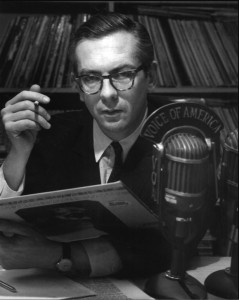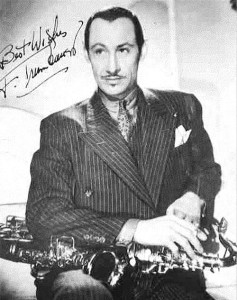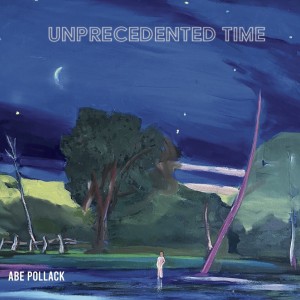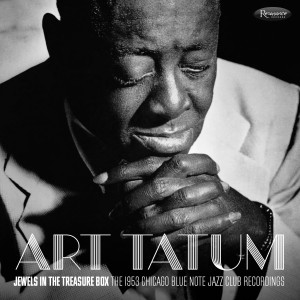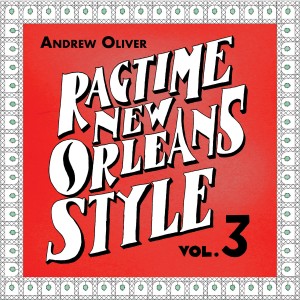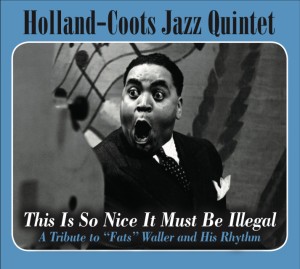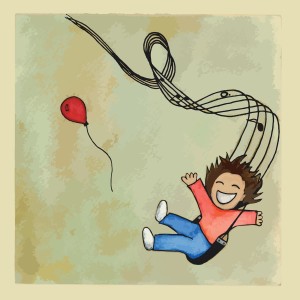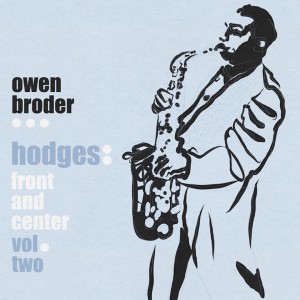 Set forth below is the seventy-first “Texas Shout” column. It first appeared in the April 1996 issue of TAR. The text has not been updated but the following note, and the one that ends the column were added when it was reprinted in May 2004.
Set forth below is the seventy-first “Texas Shout” column. It first appeared in the April 1996 issue of TAR. The text has not been updated but the following note, and the one that ends the column were added when it was reprinted in May 2004.
The Rolling Thunder store mentioned in the closing paragraph below has long since gone out of business. If you visit the jazz section of your nearby mall record store, or large chain such as Tower or Virgin, you will probably repeat my now-typical experience of being the only shopper therein. Sales of jazz recordings are a tiny (and probably decreasing) part of the current market for records – a market which has become so heavily dominated by whatever teens and pre-adolescents are buying this week that broad-based record stores are threatened with extinction.
Today’s rapidly disappearing Dixieland community, in my view, is much too small to have any effect on this situation. Therefore, I have tacitly deleted eight paragraphs, originally published in the closing portion of the following article, that discussed ways in which Dixielanders might act to increase the number of Dixieland recordings carried in current inventory by local stores.
In the second “Texas Shout,” printed in the January 1990 American Rag (then called West Coast Rag), I lamented the absence of Dixieland recordings from the general marketplace. (See: Texas Shout #2 Unavailable Records) The issue is an important one, so perhaps it’s worthwhile rechecking the scene as it stands today. Also, as has happened so often over the years, WCR/TAR‘s pages have carried some attempts at dialogue on the subject that indicate once again how desperately the terminology in our field needs clarification.
Let’s deal with the second subject first. In the February 1994 “Texas Shout,” which discussed the somewhat gloomy future of Dixieland jazz, I remarked that, with the exception of the recordings on Columbia by The Preservation Hall Jazz Band, there seemed to be no interest in producing Dixieland records by the major labels. A few months later, one of my esteemed colleagues indicated that the situation wasn’t quite that bleak, citing individual releases on Discovery, Good Time Jazz, Telarc Jazz and MusicMasters as evidence of some slight interest among the “bigs.”
With all due respect to my friend, I think we have here another example of Dixielanders using the same words to mean two different things. A “major label,” as I use the term and as I believe it is used in the commercial recording industry, refers to a label like RCA Victor or Columbia, i.e., one that is represented by some kind of recording in every record store in the country.
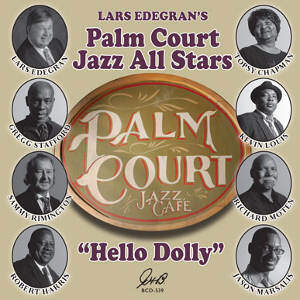
These are large corporations with thousands of recordings in their current catalogs. They record everything that is likely to sell in appreciable quantity: rock, classical, country, soundtracks, original casts of musicals, religious, etc. If you go to the record shop that is most convenient to your home, be it a small mom-and-pop store, a specialty store, mall store or whatever, it will have something in stock that you can buy and take right home on Columbia, RCA Victor or any other label that qualifies as “major.”
As I understand record industry parlance, it recognizes only two kinds of labels, “major” and “independent.” An independent label may have released many records or only a handful.
For example, George Buck’s catalog over the past forty years covers hundreds of issues and all branches of our music. You can typically find a few of George’s CDs in the jazz sections of large chain record stores in our biggest cities. However, lacking the clout and breadth to get his product into just about every retail record outlet, George is classified by the industry as an independent.
For the record industry’s purposes, Dixieland labels may be grouped into two categories, those which have arranged for national distribution and those which have not. I do not know how such arrangements are made, but I feel certain that virtually any label, even one with a very tiny catalog, can have its recordings distributed nationally.
If such distribution has been arranged for, then your local record store is in position to obtain the record for someone who orders it. That is, even if your neighborhood outlet doesn’t stock the record you want, it will be able to locate the recording in a computer file or other source; get the catalog number, price and pertinent address; and place a special order for your copy.
If national distribution has not been arranged for, then, as far as your local record store is concerned, the item you want doesn’t exist. You may have seen the CD at a festival and made a note of the artist, label and catalog number, but taking that information to your local store won’t get you a copy. Neither the store nor its supplier has any way of locating the label’s address or the price of the record.
The overwhelming majority of the U.S.-produced Dixieland jazz records are in this latter, commercially nonexistent, category. They are produced by the artists themselves or by their fans, primarily to be sold stageside at live performances. The hassle involved in placing such records into a national distribution system, not to mention the percentage of profits that are drained off by the middlemen, keeps these records in an underground distribution system consisting of living room mail order and stageside sales, supplemented by a few copies placed with specialty mail order dealers patronized by knowledgeable Dixieland collectors.
Against that background, let’s consider the assertion that Good Time Jazz, for example, is a “major” label, one of the “bigs.” I am choosing Good Time Jazz for this illustration partially because it is a label that many of you know.

I want to make it clear at the outset that I am not in any way derogating the considerable achievement of one of the most revered, and rightly so, names in Dixieland jazz recording history. Some of my earliest Dixieland acquisitions were on Good Time Jazz and they still rank with my all-time favorite albums. I have a complete run of the label’s LPs and have such high regard for GTJ that I will buy anything thereon which contains material new to my collection, even if I have to suffer some duplication in the process.
Good Time Jazz’s releases appeared during about a twenty-year period from the 1950s to the 1970s. It issued 78s, EPs, and 10″ LPs, most of which wound up being reissued in its 12″ LP line, on which nearly 60 platters appeared.
Although this material has resurfaced on CD over the years, GTJ did not release another newly-recorded album for about a quarter-century, one by the Silver Leaf Jazz Band in 1994. Since then, a few additional CDs have been produced.
It hardly needs to be said that, although Good Time Jazz’s catalog contains immortal core records of West Coast revival Dixieland, sides that have withstood the test of time, it cannot be considered a “major” label when it has produced less than 100 LPs’ worth of recordings in a half-century and when you can count the new ones (not reissues) on your fingers and toes. Good Time Jazz is, like Delmark (its Dixieland series), Sackville, Jazz Crusade and Arbors, a small jazz specialist’s label.
[Editors note: The Good Time Jazz catalog is now owned by Concord which distributes the music of a number Billboard charting artists through Universal Music Group. Sadly, that makes seeing GTJ albums reissued unlikely. The good news is Sackville’s catalog is now distributed by Delmark while Jazz Crusade and several other jazz labels have been picked up by Upbeat Recordings in the UK. Jazzology, George H. Buck’s New Orleans based label has absorbed several other small labels, particularly those featuring New Orleans artists. These specialist distributors will keep these albums available.]
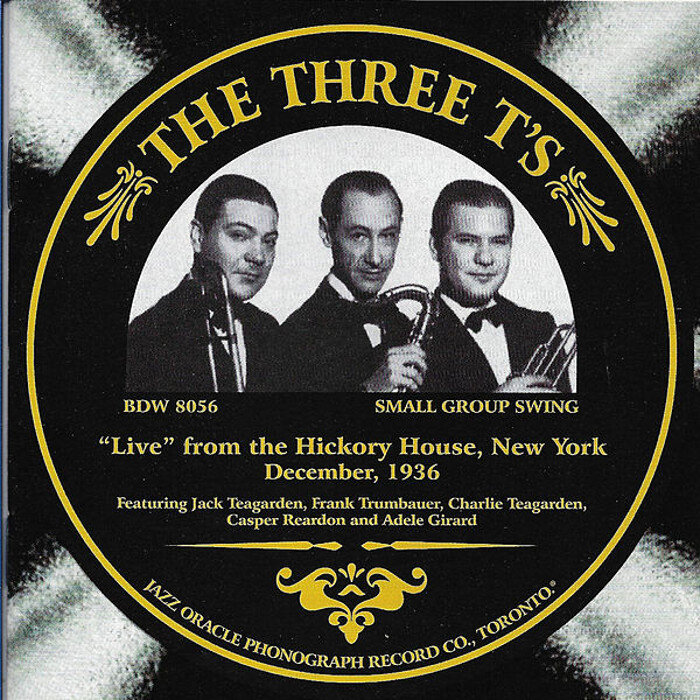
It is understandable that some Dixieland fans could be misled into thinking that these labels are bigger than they are. If you live in or near one of our largest cities, you probably have access to a Tower Records or other large chain store located therein, with browsers on several floors or spread across a warehouse-size room.
Among the plethora of modern jazz records on its racks, you will occasionally find something on Good Time Jazz, Arbors, etc. As you won’t find much other Dixieland, I suppose you could conclude that these labels are the “big” ones when actually they are the ones that have done the work necessary to enable retailers to stock their records.
Most stores don’t bother to do so. At the time my friend voiced his above-mentioned view that the CDs on Discovery, Good Time Jazz, Telarc Jazz and MusicMasters were marketed by “bigs,” I think it unlikely that a single retail store in my native state of Delaware had any of the four in bins available for purchase by a casual buyer.
That situation has persisted as long as I’ve been writing “Texas Shout.” It is my main reason for revisiting the subject today.
When this column began in 1989, not much Dixieland had been released on CD. That situation is no longer true.
All of the most influential recordings of our music are now on compact disc, along with nearly everything else of jazz interest that was recorded in the twenties. However, the bulk of it has been produced in Europe on collectors’ labels and virtually none of it is currently stocked in a store that is convenient for shopping by high school students or other members of the general public in your area.
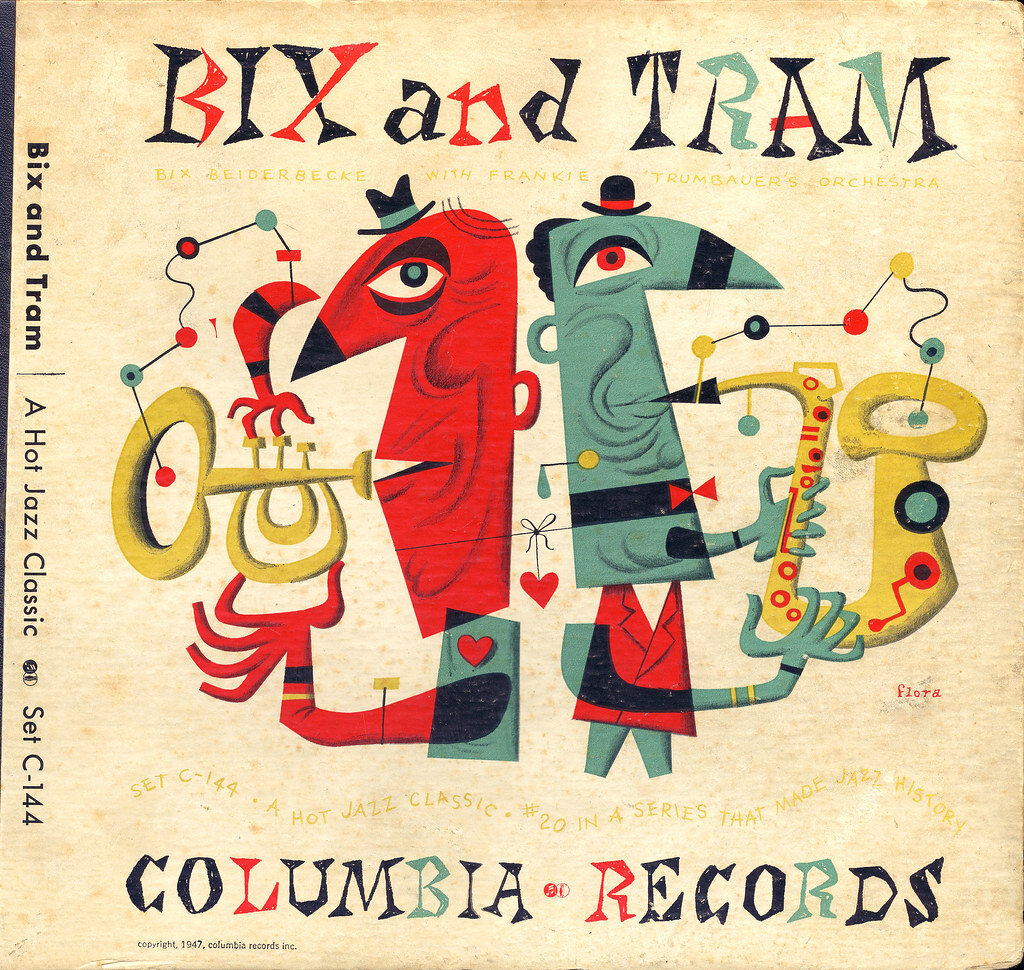
If you go through the jazz section of your local mall music store, you will indeed find some archetypical examples of our music, most often by Satchmo, Condon, Ellington, Bix, Fats, Bessie, Jelly and maybe Bechet, Tea and a few others whose names are the closest things we have to commercially viable household words. Nearly all of these albums will be post-1924, i.e., electrically recorded. No recent Dixieland recordings will be on hand.
This situation is better than it was in 1989, but not by much. It is reassuring that a sample of truly great classic-period Dixieland is easily obtainable by the general public. However, this sampling is not a sufficient quantity to sustain anyone who develops a keen interest in our music. Also, the artists listed above do not represent a true cross-section of the seven Dixieland styles.
WCR/TAR‘s pages have been filled with articles in the intervening years regarding the crucial need to interest more fans, especially younger people, in our music. Believe me, it won’t happen if the records aren’t where newcomers can conveniently buy them.
It takes a while for someone to get deeply enough committed to our music to begin learning about and subscribing to Dixieland publications where specialty dealers advertise. It takes a while for someone to get deeply enough committed to our music to begin writing away to buy records from specialty dealers.
The basic foundation of my own record collection consists of records purchased at two nearby record stores in Wilmington, Delaware while I was in high school. Although a jazz store in center city Philadelphia was about an hour’s drive away, I didn’t find out about it until I was just about to enter college. Moreover, taking the family car into downtown Philly just to buy records wasn’t something I would have been able to do very often anyway.
If those two stores had not stocked Turk, the Firehouse Five, the YBJB, the Hot Five, the Red Hot Peppers, Bessie Smith, Condon, Pete Daily, Sharkey Bonano, the Bob Cats and the others at that point in my life when I had the time after school to pay attention to them, I probably would have become interested in something else (as did the majority of my friends) and never entered the world of Dixieland jazz. Think of how hard it must be now, when it is all but impossible for a youth to follow up an initial contact with Dixieland by going out the next day and purchasing records by that artist or one who plays a similar Dixieland style.
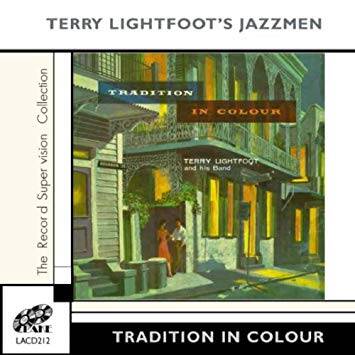
Suppose your teenage friend hears a King Oliver record at your home or on the radio in the car, or attends a high school Dixieland assembly at which an Oliver tune is played. Suppose the demonstration accomplishes its purpose, and your friend decides to stop by his/her favorite record store the next day and grab something by Oliver. How long do you think that spark of interest is likely to remain burning when no such record is on hand?
It is impossible to overstate the seriousness of this problem to the continued vitality of the scene. However, I confess that I have no solution that seems likely to work on a large scale.
Record stores are in business to make money. If Dixieland records sell, they’ll restock Dixieland. However, with today’s sophisticated inventory procedures, they aren’t likely to restock a Dixieland record if, when it finally is sold, the computer tells them that it’s been gathering dust in the browser for the past four years. As a result, except for the Armstrongs and Ellingtons, twenties-style jazz has disappeared from all but the largest big-city stores that want to maintain something approximating a complete line.
Let me close this essay by thanking Brad Riesau of Rolling Thunder, a record store in Wilmington, Delaware, for sharing with me some of his experience in record distribution and retailing. It goes without saying that any misstatements or other unfortunate utterances in this column are solely my responsibility.
❖ ❖ ❖
There are only four more “Texas Shout” columns to be reprinted to conclude the series. For a variety of reasons, there will be no further reprints and the column will close down.
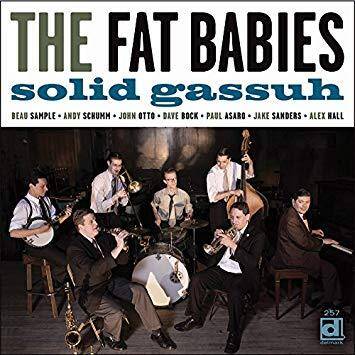
To me, the most important of those reasons is that there no longer is a significant readership for writing that attempts to present a framework for understanding Dixieland jazz and ragtime as valid forms of art, worth attention for themselves alone apart from their usefulness as background for dancing, drinking, general socializing, civic events and promotions of one sort or another. That being the case, the conclusion of this column four months from now will end a stretch of 38 years during which, each month, some jazz or ragtime periodical carried a review or column under my byline.
This event will be regarded with indifference by just about everybody, but as you can imagine, it has caused me to do a bit of thinking about the past 38 years. We’ve gotten to know each other fairly well during that time, so perhaps you’ll think it understandable, and not unduly immodest, if I share some of those thoughts with you as footnotes to this column and the four coming up.
My writing consisted primarily of reviews, principally of recordings, but some of festivals. I believe that, during the 31 years that I was writing record reviews, I had more published reviews of recordings of Dixieland jazz, ragtime and related music than any other U.S.-based writer, all of them in small-circulation ragtime and jazz periodicals. The remainder was essentially the 75 “Texas Shout” columns, now collected into a book, and liner notes to 100 or so recordings, of mine as well as by a variety of other artists.
Actually, I had not planned to stop writing about jazz when I gave up reviewing recordings seven years ago. I like writing liner notes and expected that I would get occasional assignments therefor.
However, it was at about that time that the deterioration of the market for Dixieland jazz and ragtime began to take hold with a vengeance. Just as there is no longer a readership for discussion of these musics as art forms, as mentioned above, there is a corresponding lack of interest in informative liner notes.
I believe that the majority of people who buy CDs of such music today do so to get souvenirs at live performances and do not bother to read the liner notes. At any rate, the only liner note assignments to come my way in the past seven years were for my own recordings.
My approach to record reviewing was described in an earlier “Texas Shout.” My plan for “Texas Shout” was to write about things that seemed clear to me from what was going on around me in Dixieland jazz and ragtime, but which weren’t being discussed elsewhere in the literature.
I think I was fairly successful in that regard and that “Texas Shout,” if I do say so myself, has stood up pretty well over the years. Nothing has come along that has caused me to think that I should revise the various classifications and definitions offered in “Texas Shout,” while the descriptions of the scene, and the (pessimistic, I’m afraid) predictions I made about what was happening to it, appear, with hindsight, to have been pretty much on the money.
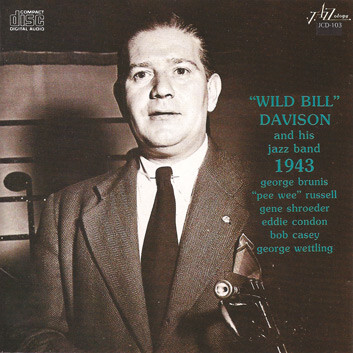 However, while I believe I can take pride in “Texas Shout,” you might like to know that it does not contain what I consider to be my best single piece of music writing. That honor goes to the liner notes to Jazzology LP J-103 “Wild Bill Davison And His Jazz Band 1943” now available, along with my liner notes (reprinting, unfortunately, all of the original printer’s typographical and proof-reading errors that appeared on the LP jacket), as part of Jazzology JCD-103 (a CD).
However, while I believe I can take pride in “Texas Shout,” you might like to know that it does not contain what I consider to be my best single piece of music writing. That honor goes to the liner notes to Jazzology LP J-103 “Wild Bill Davison And His Jazz Band 1943” now available, along with my liner notes (reprinting, unfortunately, all of the original printer’s typographical and proof-reading errors that appeared on the LP jacket), as part of Jazzology JCD-103 (a CD).
The platter contained a studio date, previously unissued commercially, by one of the greatest Chicago-style Dixieland lineups of all time. I was absolutely delighted, and not a little overawed, when producer George H. Buck asked me to do the notes for it. (In fact, George says, in his own paragraph on the disc’s sleeve, “This album contains the greatest jazz that I have or will ever issue.”)
I assumed, correctly as it turned out, that this would be the most important liner note assignment I would ever get. I determined to make sure that my readers would properly appreciate the jazz they were about to experience. I don’t think I ever again came as close to a perfect bull’s-eye with my pen, but if I was going to peak as a writer, I’m glad it was at that time.
 Want to read ahead? Buy the book!
Want to read ahead? Buy the book!
The full run of “Texas Shout” has been collected into a lavishly illustrated trade paperback entitled Texas Shout: How Dixieland Jazz Works. This book is available @ $20.00 plus $2.95 shipping from Tex Wyndham, On request, Tex will autograph the book and add a personalized note (be sure to tell him to whom the note should be addressed).
Tex Wyndham’s 3 CD Guide to Dixieland with music and commentary is available for $20 plus $2.95 shipping. The separate CD, A History of Ragtime: Tex Wyndham Live At Santa Rosa, is available for $13.00 plus $2.00 shipping. On request, Tex will autograph the inner sleeve and add a personalized note (be sure to tell him to whom the note should be addressed).
Send payment to Tex Wyndham, P.O. Box 831, Mendenhall, PA 19357, Phone (610) 388-6330.
Note: All links, pictures, videos or graphics accompanying the Shouts were added at the discretion of the Syncopated Times editorial staff. They did not accompany the original columns and do not necessarily reflect the opinion of Tex Wyndham.

